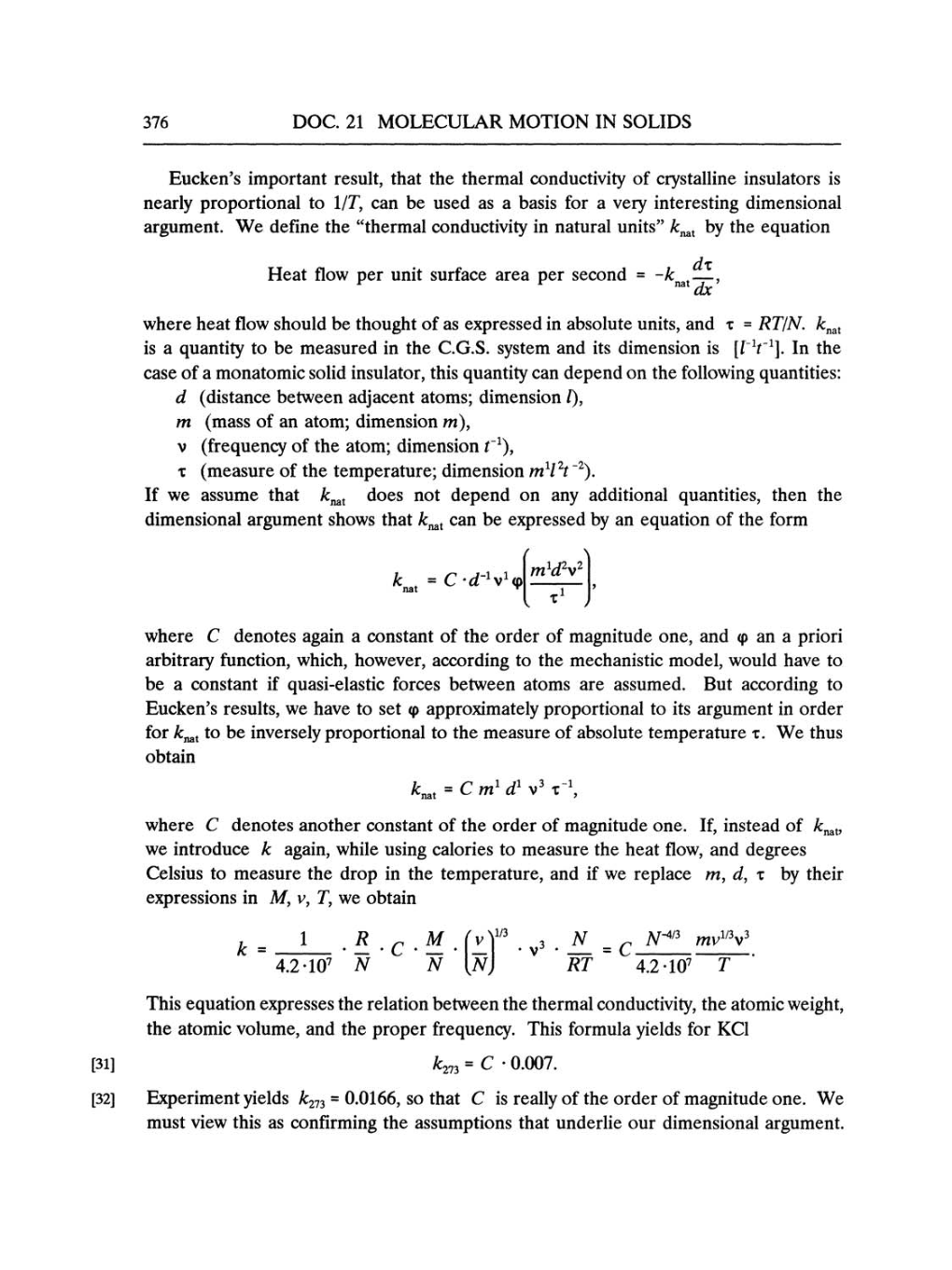376
DOC.
21
MOLECULAR MOTION IN
SOLIDS
Eucken's
important result,
that the thermal
conductivity
of
crystalline
insulators
is
nearly proportional
to
1/T,
can
be
used
as a
basis
for
a very interesting
dimensional
argument.
We define the "thermal
conductivity
in
natural units"
knat
by
the
equation
dx
Heat
flow
per
unit
surface
area
per
second
=
-knat-,
where heat
flow should be
thought
of
as
expressed
in
absolute
units,
and
x
=
RT/N.
knat
is
a
quantity
to be
measured
in
the
C.G.S.
system
and
its dimension
is
[l-1t-1].
In
the
case
of
a
monatomic
solid insulator, this
quantity
can
depend
on
the
following quantities:
d
(distance
between
adjacent atoms;
dimension
l),
m (mass
of
an atom;
dimension
m),
v
(frequency
of the
atom;
dimension
t-1),
x
(measure
of the
temperature;
dimension
m1l2t-2).
If
we assume
that
knat
does not
depend
on any
additional
quantities,
then the
dimensional
argument
shows
that
knat
can
be
expressed
by an
equation
of the
form
knat
=
C
-d^v^qt~
'mW
x1
where
C
denotes
again a
constant
of the order of
magnitude one,
and
ip
an a
priori
arbitrary function, which, however, according
to
the
mechanistic
model,
would have
to
be
a
constant if
quasi-elastic
forces
between
atoms
are
assumed.
But
according
to
Eucken's
results,
we
have to set
p
approximately proportional
to its
argument
in
order
for
knat
to
be
inversely
proportional
to
the
measure
of
absolute
temperature
x.
We
thus
obtain
fcnat
=
c
m1
d1 v3
X"1,
where
C
denotes another
constant
of the order of
magnitude
one.
If,
instead of
knat,
we
introduce k
again,
while
using
calories
to
measure
the heat
flow,
and
degrees
Celsius to
measure
the
drop
in
the
temperature,
and if
we replace m, d,
x
by
their
expressions
in
M,
v,
T,
we
obtain
1
R
"
M
v Y/3
,
N
"
AT"3
k
=
;
•
v3
•
_
=
c
mv1/3v3
4.2-107
N N
\N
J
RT
4.2
107
T
This
equation
expresses
the relation between the thermal
conductivity,
the
atomic
weight,
the atomic
volume,
and the
proper
frequency.
This
formula
yields
for
KCl
[31] k273
=
C
.
0.007.
[32]
Experiment
yields
k273
=
0.0166, so
that
C
is
really
of the order of
magnitude one.
We
must view
this
as confirming
the
assumptions
that underlie
our
dimensional
argument.
